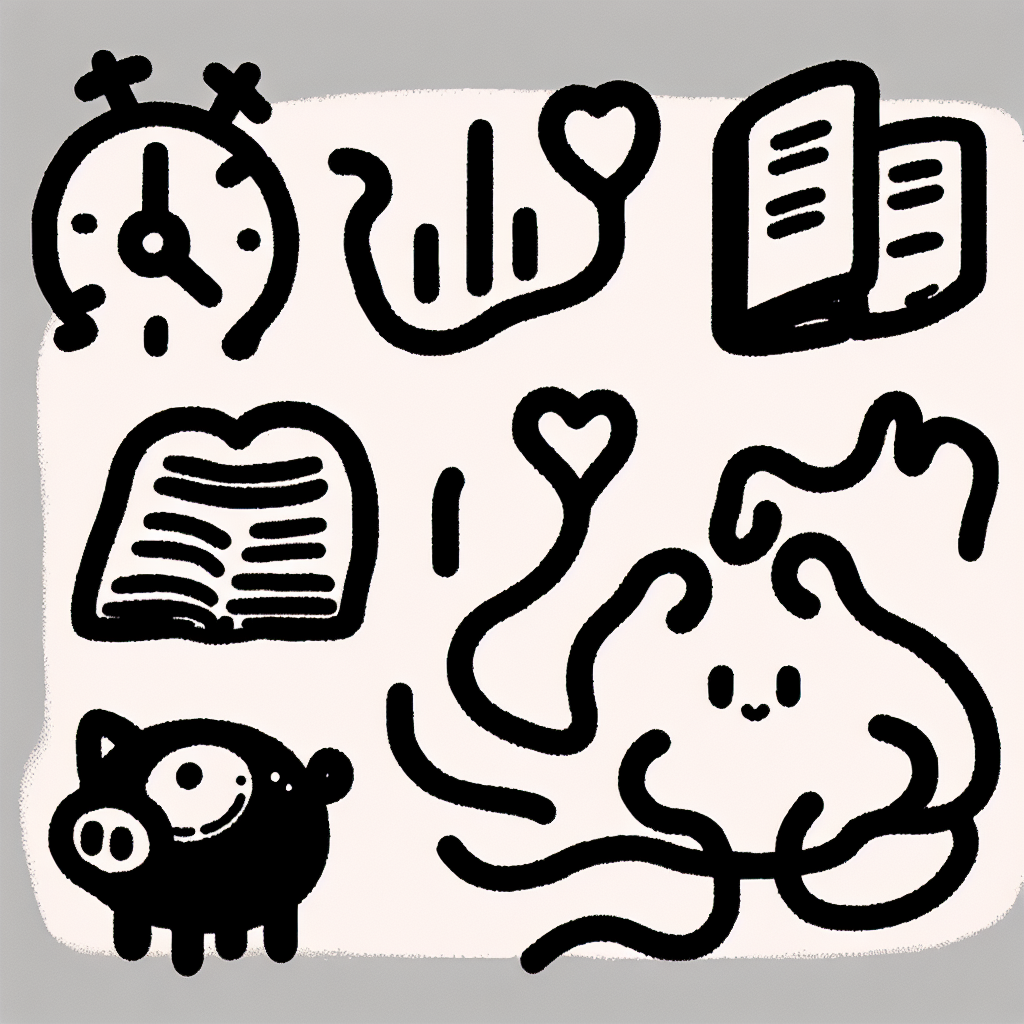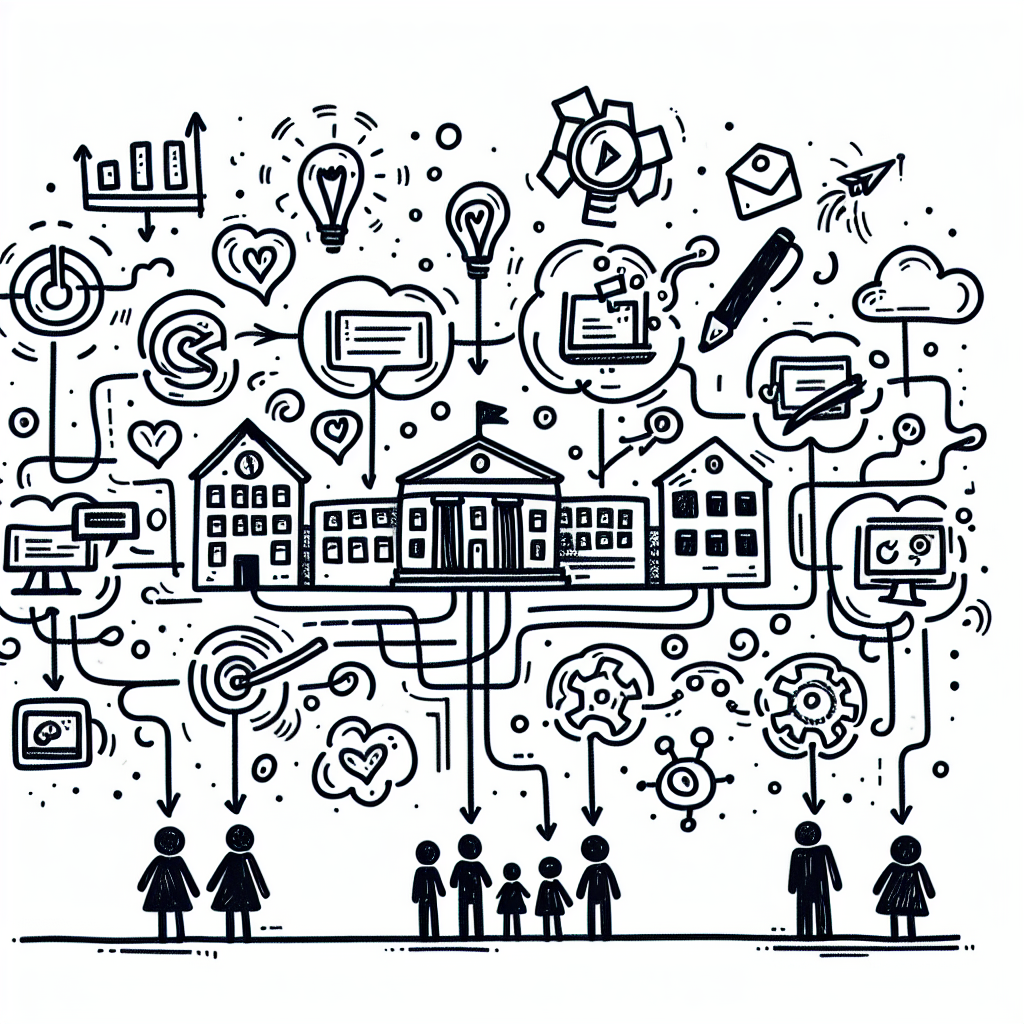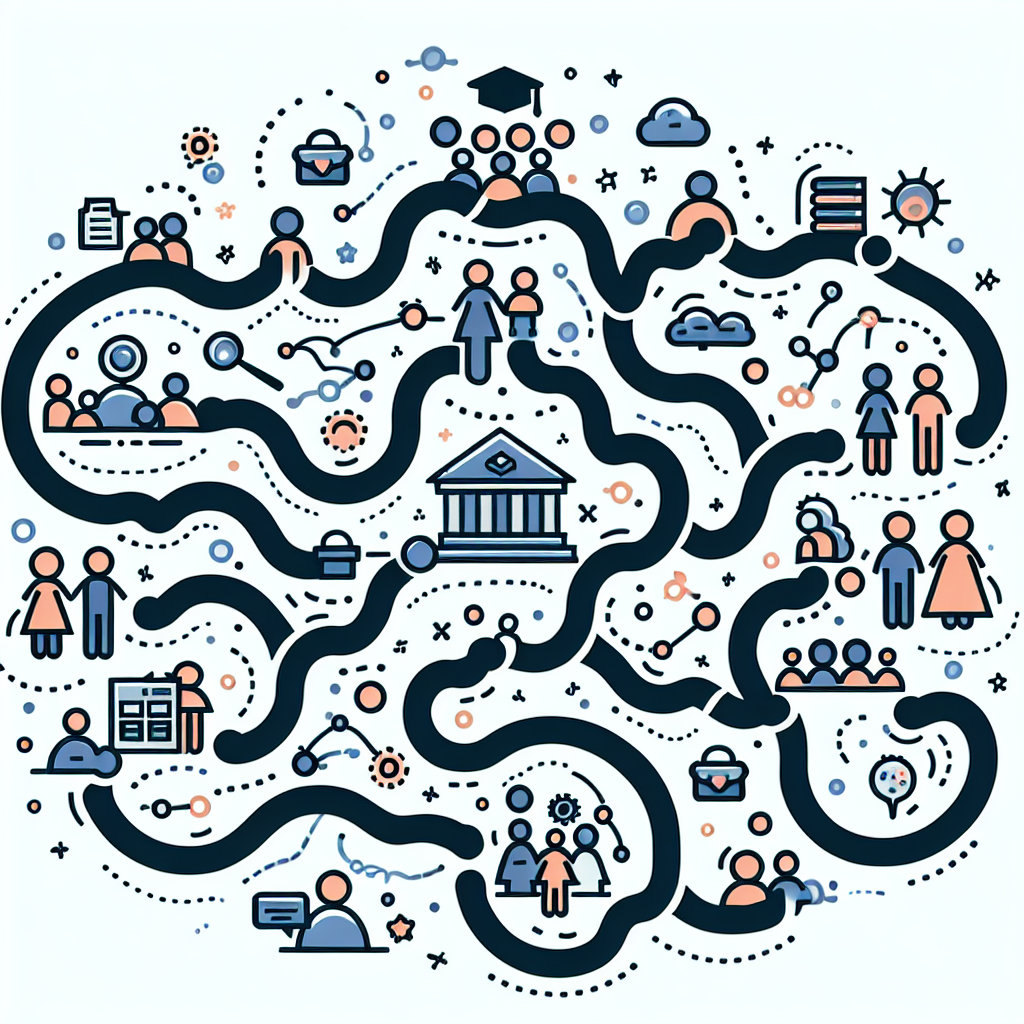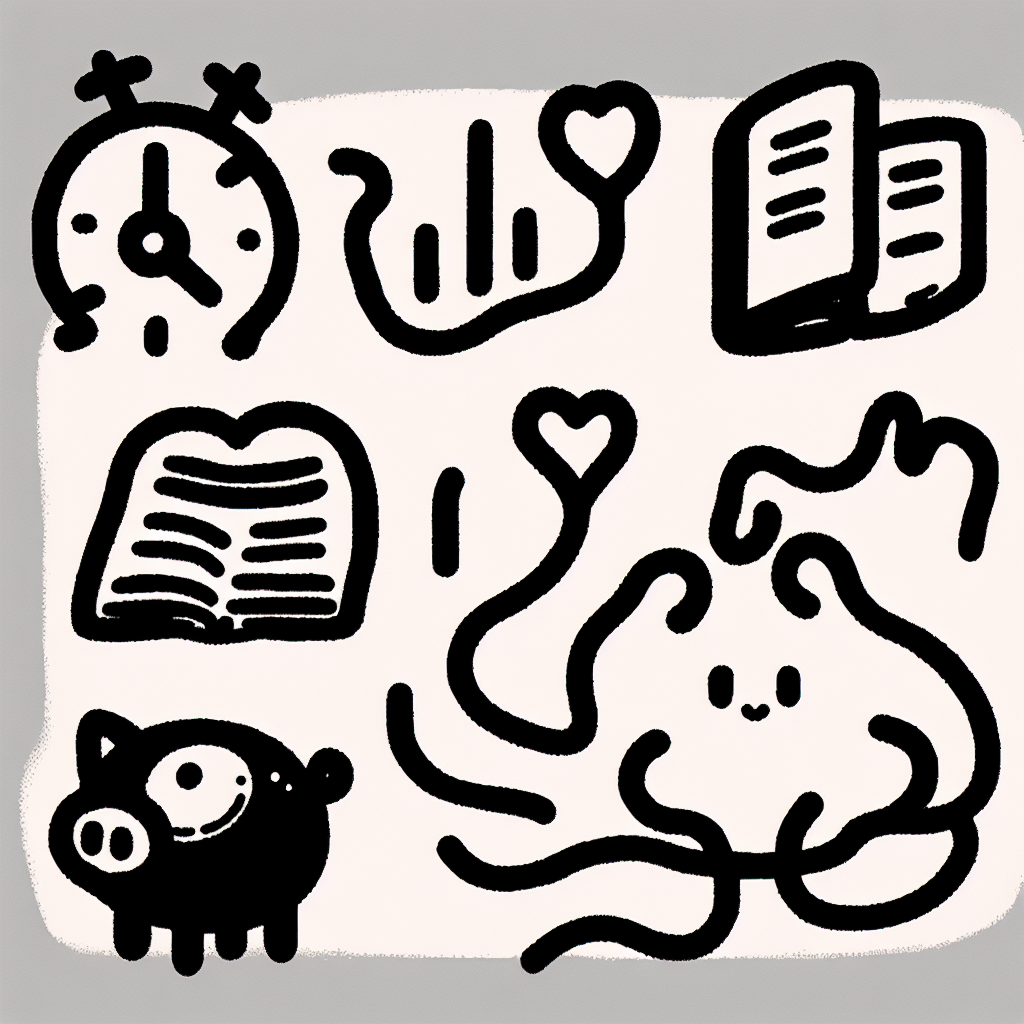Ultimate Guide to College Success: Tips, Data, and Strategies for Students and Educators
Introduction: Why College Preparation Matters
The transition from high school to college is a pivotal moment that influences lifelong learning and career success. Planning ahead helps students adapt to new academic expectations, manage increased independence, and make informed choices about their futures.
Using data-driven strategies can significantly improve college readiness and student outcomes. Research shows that students who engage in structured college preparation programs are more likely to enroll in and complete higher education. For example, a report by the National College Attainment Network found that students who received targeted college counseling were 27% more likely to attend college compared to their peers without such support.
This guide on college tips is designed for students, parents, and educational agencies dedicated to improving college readiness. By following proven approaches, they can better navigate the challenges of the college transition and lay a foundation for long-term success.

📊 Using Data to Drive College Readiness
Effective use of data is a key strategy among college tips for improving student outcomes. College and Career Readiness (CCR) data plays a central role in helping educators, schools, and agencies monitor how well students are prepared for life after high school. This information allows for timely interventions to support students' transition into postsecondary education and the workforce. According to the Forum Guide to College and Career Readiness (CCR) Data, CCR data helps institutions align their programs with real-world expectations and improve readiness outcomes.
Types of CCR Data
Several categories of CCR data contribute to a comprehensive view of student preparedness:
- Academic indicators such as GPA and standardized test scores (e.g., SAT/ACT) provide evidence of content mastery.
- Behavioral indicators like attendance and student engagement offer insight into habits that influence long-term success.
- Course-taking patterns—including enrollment in AP, IB, dual enrollment, and Career and Technical Education (CTE) programs—reflect a student’s exposure to rigorous and career-oriented curricula.
Best Practices for Data Collection
To effectively use CCR data, institutions should:
- Ensure accuracy and consistency in data reporting to maintain the reliability of insights.
- Collaborate across local education agencies to standardize practices and share best approaches.
- Protect student privacy, committing to ethical data use that respects confidentiality and legal guidelines.
Predicting College Success from High School Performance
Research shows that high school performance can be a strong predictor of college success. For example, a study in Palau found that students’ high school GPA and persistence levels were significant indicators of their outcomes in higher education. This finding underscores the value of leveraging high school data to guide college planning efforts (Using High School Data to Predict College Success in Palau).
Incorporating these strategies into broader college tips can help educators and students make informed decisions that lead to long-term success.

🧠 Academic Preparation: Setting Yourself Up for Success
Meeting Selective Admissions Criteria
One of the most crucial college tips for students aiming at selective institutions is to maintain strong academic records. Data shows that a high school GPA of 3.5 or higher combined with SAT scores of 1100 or above significantly boosts the likelihood of admission to highly selective colleges (Making the Cut: Who Meets Highly Selective College Entrance Criteria?). This underscores the importance of consistent academic performance and standardized test preparation throughout high school.
Balancing College Prep and Vocational Training
Another important college tip is to consider integrating vocational training with traditional college prep. Research indicates that students who pursue both pathways perform just as well academically as those who follow a purely college preparatory track. This dual approach supports the development of practical skills alongside academic knowledge, enhancing readiness for both higher education and future careers (Students Who Prepare for College and a Vocation).
Key Coursework for College Readiness
To be academically prepared for college, students should complete a well-rounded curriculum. The essential "Core 4" consists of English, Math, Science, and Social Studies. To strengthen their college applications and readiness, students should also pursue enrichment courses such as foreign languages, computer science, and the arts. Participating in rigorous programs like Honors, Advanced Placement (AP), International Baccalaureate (IB), or dual-enrollment can further demonstrate college readiness and provide college credits while still in high school.

Non-Academic Skills for College Success
Developing strong non-academic skills is essential for thriving in college. These college tips focus on areas beyond the classroom that significantly impact a student’s overall success.
Time Management & Organization
Effective time management and organization can reduce stress and improve academic performance. Use planners, calendar apps, or task management tools to keep track of assignments, exams, and deadlines. Establish daily and weekly routines to build consistency. Break large assignments into smaller, manageable steps to make progress more achievable and less overwhelming.
Study Techniques
Incorporate proven study methods to maximize learning. Active recall, spaced repetition, and practice testing help reinforce knowledge and improve retention. Participating in study groups can also promote accountability and deepen understanding through discussion and collaboration.
Mental Health and Resilience
Maintaining mental health is crucial for long-term success. Practice mindfulness, get regular sleep, and engage in self-care routines. Colleges typically offer counseling services and mental health resources—utilize them when needed to build emotional resilience and manage stress effectively.
Financial Literacy
Understanding basic financial concepts can prevent common money-related challenges. Learn how to navigate FAFSA, apply for scholarships, and manage student loans responsibly. Creating a budget and tracking expenses helps maintain financial stability. Many campuses offer workshops and online tools to strengthen financial literacy skills.
Building these non-academic competencies will support academic goals and enhance the overall college experience.

🧭 Navigating the College Application Process
Choosing the Right College
One of the most important college tips is to take time selecting the right school. Consider factors like academic programs that align with your interests, available financial aid, campus culture, and the school's geographic location. Use college search platforms such as College Board's BigFuture or the U.S. Department of Education’s College Scorecard to compare institutions based on graduation rates, costs, and student experiences.
Building a Strong Application
Strengthen your application by compiling all essential materials early. This includes official transcripts, letters of recommendation, and a comprehensive list of extracurricular activities. Craft personal statements and essays that genuinely reflect your experiences and goals. Use specific examples and maintain a clear, authentic voice to stand out to admissions committees.
Managing Deadlines and Requirements
Another essential college tip is to stay organized. Create a detailed timeline that includes standardized test dates (like the SAT or ACT), application deadlines, and financial aid submissions such as the FAFSA. Be aware of the differences between early decision, early action, and regular decision deadlines, and plan accordingly to avoid missing key dates.

Transitioning from High School to College
Transitioning from high school to college can be challenging, but with the right college tips and support systems in place, students are more likely to succeed.
Supporting Student Transitions
One effective way to help students is through the use of College and Career Readiness (CCR) data to identify those who may need additional support. Schools can use this data to target interventions and resources where they are most needed. Programs like summer bridge initiatives and college orientations also play a crucial role in easing the transition. These programs familiarize students with campus resources, academic expectations, and help build early connections with peers and faculty. Forum Guide to College and Career Readiness (CCR) Data
Encouraging Immediate Enrollment
Encouraging students to enroll in college immediately after high school can help maintain academic momentum. In 2022, 62% of high school completers made this transition without delay. However, there are notable disparities, with 66% of females enrolling immediately compared to 57% of males. Addressing this gender gap with targeted college tips and outreach may improve overall enrollment rates. Immediate College Enrollment Rate
First-Year College Success Tips
To thrive during the first year of college, students should consistently attend classes and actively engage with their professors. Making use of available resources like tutoring and academic support centers can boost academic performance. Additionally, getting involved in campus organizations and activities helps students build a support network, which is critical for emotional and academic well-being. These college tips can greatly improve a student's ability to adjust and succeed in their new environment.

🛠️ Implementation Strategies for Educators and Agencies
Building Cross-Institutional Collaboration
To improve college readiness, high schools, colleges, and community agencies need to work collaboratively. Sharing data across institutions allows for a more comprehensive understanding of student progress and helps align strategies to support successful transitions. Establishing joint advisory boards and College and Career Readiness (CCR) task forces ensures that all stakeholders have a voice in shaping and evaluating initiatives. These groups can set shared goals, identify gaps, and coordinate services that directly support students.
Tools and Resources to Support CCR
Educators and agencies can use data dashboards to monitor student progress toward college readiness benchmarks. These tools provide real-time insights into academic performance, attendance, and other key indicators. Early warning systems can identify students at risk of falling behind, triggering timely interventions. Intervention toolkits offer structured strategies and resources that schools can implement to address specific barriers to college readiness.
Policy and Program Development
Outcome data should guide the creation of policies and programs that promote college readiness. By analyzing trends in graduation rates, college enrollment, and remediation needs, educators and policymakers can refine their approaches. Targeted investments in programs that support underserved populations—such as first-generation college students or those from low-income backgrounds—can help close equity gaps and ensure more students are prepared for postsecondary success. These efforts are key components of effective college tips designed to enhance readiness and access.

📚 Additional Resources and Tools
When navigating higher education, having access to the right tools can make a big difference. Here are some essential resources to support you along the way with practical college tips:
- College Scorecard: Offered by the U.S. Department of Education, this tool provides detailed information on college costs, graduation rates, and student outcomes to help you make informed decisions.
- FAFSA Application: A critical step in applying for financial aid, completing the Free Application for Federal Student Aid (FAFSA) can open doors to grants, loans, and work-study opportunities.
- Big Future by College Board: This platform helps students explore colleges, careers, and scholarships, offering personalized college tips based on your interests and academic profile.
- Occupational Outlook Handbook: Managed by the Bureau of Labor Statistics, this guide provides insights into various careers, including job outlook, required education, and median pay—useful for aligning academic paths with job prospects.
- National Center for Education Statistics (NCES) Resource Library: This library offers a wide range of education data and reports to support research and decision-making throughout your college journey.
Using these tools consistently can help you apply essential college tips in real-world planning and academic success.

Conclusion: Key Takeaways
College readiness is a multifaceted goal that requires attention to academic performance, strategic use of data, and the development of non-academic skills. These components work together to help students navigate the transition from high school to higher education.
Collaboration between schools and families is essential. When educators and parents align their efforts, they create a support system that reinforces college readiness at every stage of a student’s development.
Educational data provides valuable insights into student progress and potential. When used strategically, it becomes a powerful tool for identifying strengths, addressing gaps, and tailoring support.
As one expert put it, "Preparation is the key to college success — academically, emotionally, and practically."
By focusing on these core elements, students are better equipped to meet the demands of college life and thrive in their academic journeys.
These college tips serve as a practical framework for building a strong foundation for future success.














